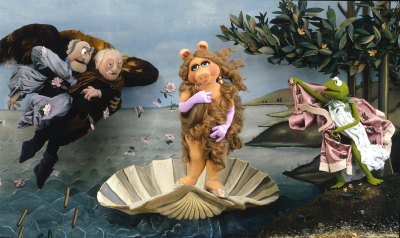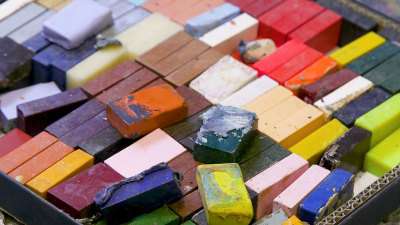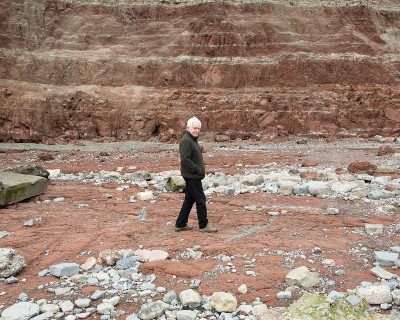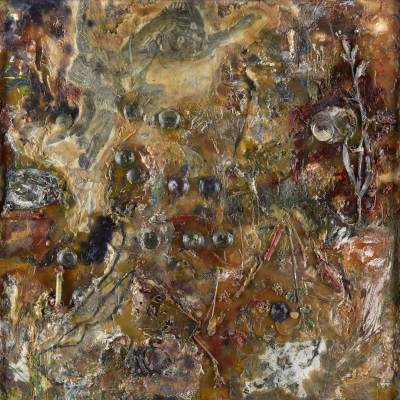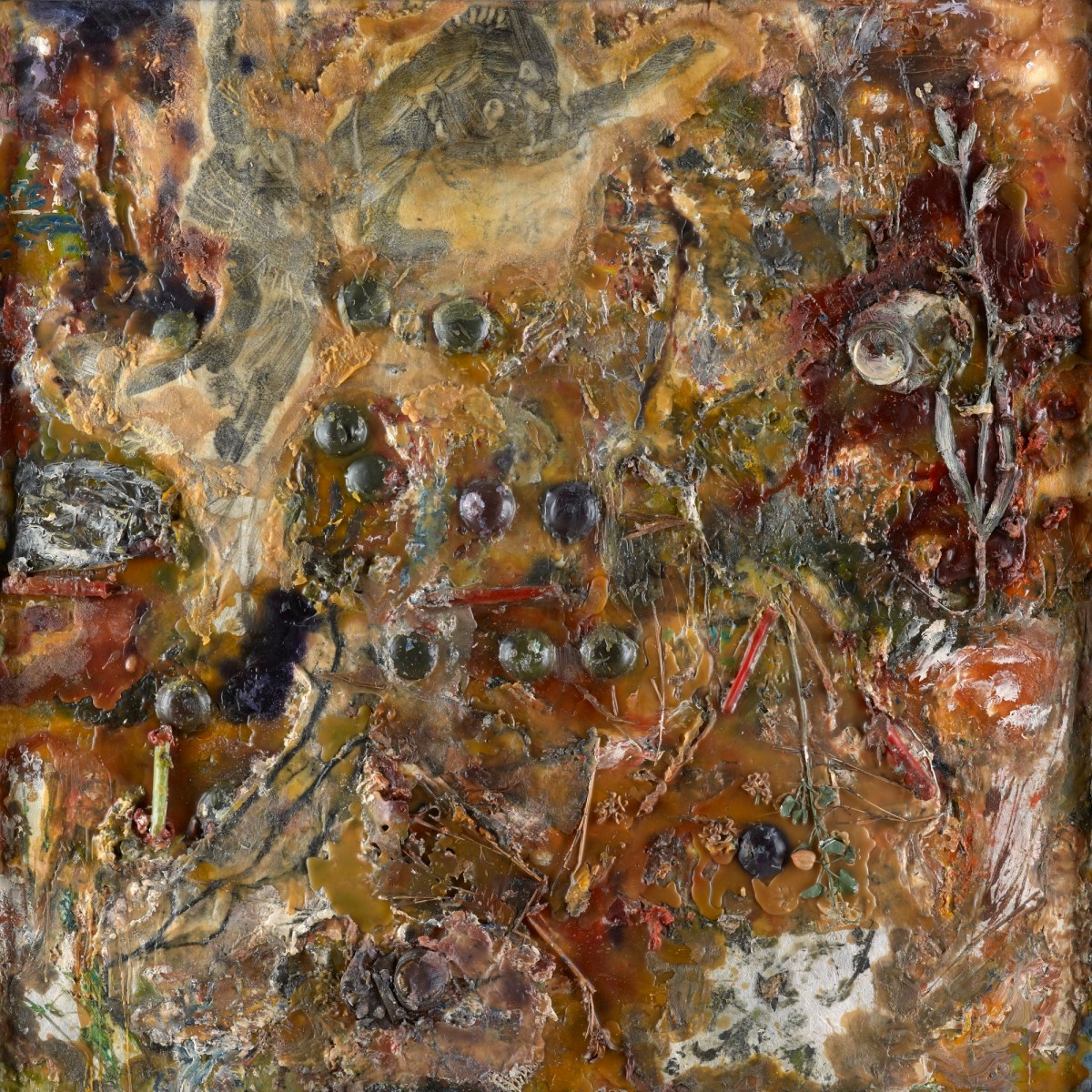
Terry Setch RA, Smoked Out, 1989.
Encausted pigmented wax, moulded wax shapes, found plastic objects and natural material on polypropylene, polystyrene support, board backed. 1220 mm x 1220 mm x 30 mm. © Terry Setch RA. © Photo: Royal Academy of Arts, London.
This image is not available to download. To licence this image for commercial purposes, contact our Picture Library at picturelibrary@royalacademy.org.uk
Smoked Out, 1989
Terry Setch RA (b. 1936)
RA Collection: Art
Setch painted Smoked Out for the exhibition Images of Paradise held at Harewood House, Yorkshire, in 1989. The exhibition was organized by Survival International, a group dedicated to protecting the lives, culture, and land of tribal peoples. The show examined the destruction of Brazilian rainforests and subsequent threat to local indigenous groups, particularly the Yanomami Indians. The title refers to the smoke from fires used to clear trees for mining and plantations.
Much of Setch's work has focused on such environmental issues, especially those affecting the beaches near his home in South Wales. These works similarly emphasize the drama of the landscape and the impact of human waste on the area.
The subject matter of this piece challenged Setch in the move away from his familiar beach scenes, as he now needed to find a way of conveying an unfamiliar terrain while also metaphorically representing the changes it was undergoing. Setch used a complex mixture of wax, found objects, and natural materials to express the density and decay of the rainforest, incorporating pieces of litter and dried plants to represent natural and man-made destruction. The artist has stated that this work was influential in his artistic practice in that it allowed him to explore new techniques and materials that have since become common elements in his work. This is a reason why he selected it as his diploma work, presenting it to the Royal Academy when he was accepted as an academician in 2009.
Rather than creating a direct, traditional representation of the landscape, Setch shows a more dynamic, emotionally engaged depiction. He has stated that 'a painting is as much the channel or filter for how I "picture" landscape in my physical and emotional absorption of it. From that point, I attempt to find counterparts in paint and matter for what I see and sense within both the place and the painting.'
Through much of his oeuvre Setch has explored the ephemeral quality of natural locations. He particularly looks at the way in which man-made detritus becomes absorbed into the landscape, transformed by the elements, and gradually perceived by mankind as simply a part of the natural space. This is conveyed in this work through the incorporation and physical transformation of pieces of litter. The artist coats them and breaks them so that they are recognizable and yet now inseparable from their environmental context.
Object details
1220 mm x 1220 mm x 30 mm
Start exploring the RA Collection
- Explore art works, paint-smeared palettes, scribbled letters and more...
- Artists and architects have run the RA for 250 years.
Our Collection is a record of them.
